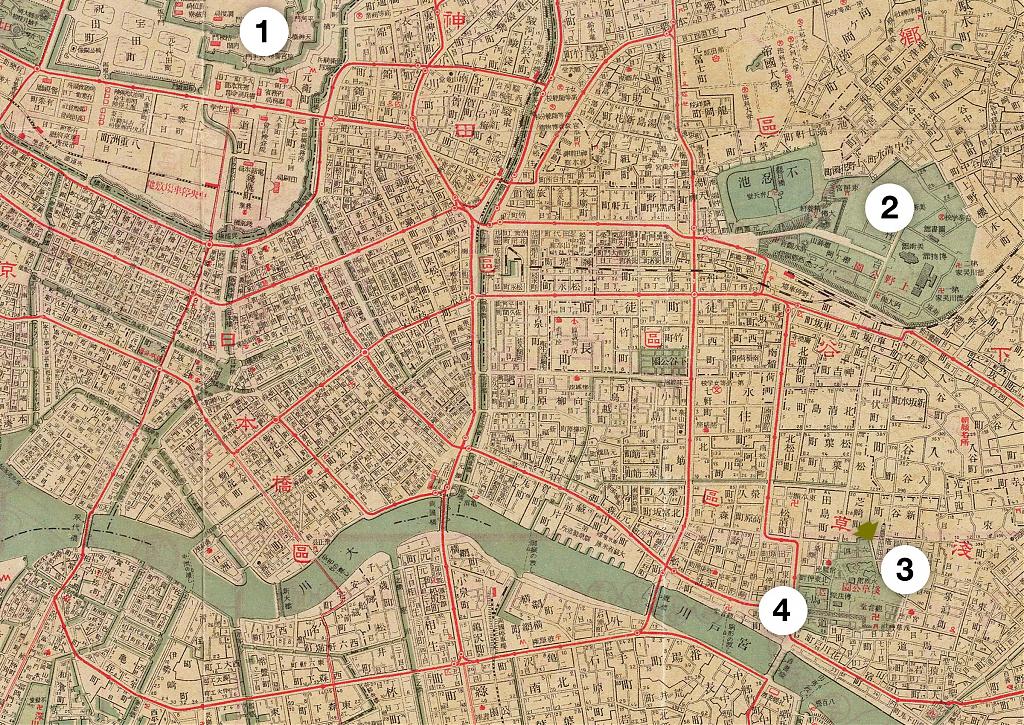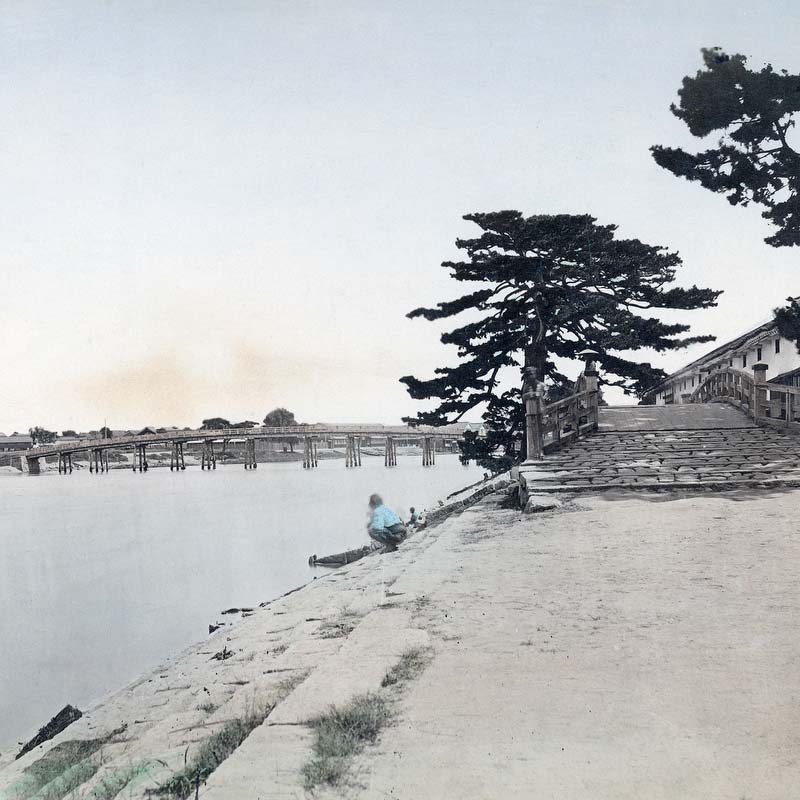From the late 19th century on, Tokyo’s Asakusa Park was a park in the modern sense, an amusement park. This is where the masses went to enjoy themselves.
The park was filled with theaters, restaurants, unlicensed brothels, and once movies had reached Japan, scores of cinemas. Asakusa Park pretty much remained Tokyo’s main entertainment district until well into the 20th century, even surviving the devastation of the Great Kanto Earthquake of 1923 (Taisho 12).
The symbol of the district, actually the symbol of all of Tokyo, was Ryounkaku, Japan’s very first skyscraper, better known as Junikai, or Twelve Stories, seen at the far back of this photo.

Built in 1890 (Meiji 23) after a design by Scottish engineer William K. Burton (1856-1899), the 69 meter tall building was for decades the tallest structure in the city, twice as high as the Nikolai Cathredral. It was visible from just about anywhere in the city, and if in turn you wanted to see the city, you scaled it. Atago-yama was the only other place that rivaled it for panoramic views of Tokyo.
Junikai featured Japan’s very first elevator and was an entertainment palace in itself. There was a shop with sales assistants in Chinese dress selling Chinese goods, there were art exhibitions, and there was of course an observation floor. Actually, there were two, one on the tenth floor decked out as a lounge, complete with chairs, and another one on the twelfth floor featuring telescopes.1

In The Nightside of Japan, a book published in 1914 (Taisho 3), the Japanese author gives a wonderful description of the tower and the surroundings that brings to life the rawness of the area.2
At the east end of the street there stands a tall hexagonal brick building in twelve stories; its name is the Ryounkaku (Tower piercing through clouds), and popularly called Junikai (Twelve Story Tower). When the tower was first built the elevator was furnished for visitors; but shortly afterwards as there happened an unfortunate event, owing to incomplete adjustments of the machine, it was abolished by order. You step up to the top of the tower by the spiral steppings and, in rooms of each story, various kinds of toys and other articles are sold, or fine pictures and photographs are hung against walls. In 1911, one winter night at about eleven, a young man jumped down over the balcony of the eleventh story of the tower and killed himself, crushing his body upon the ground. After this event the windows and balconies above ten story are entirely covered with wire-nets. … Stepping down the tower you enter a beef shop (gyu-ya) just below the tower; it is now one o’clock A.M. and there some twenty or thirty labourers or workmen of the lowest class are drinking sake, and devouring beef, pork, or even horseflesh from the boiling pans on square tables arranged in a broad, dusky room. When you enter the room your nose is attacked by the stinging smell of bad sake and boiling flesh, mixed with the odour of cheap tobacco smoke, which fills the room and whirls like dense clouds. Maid-servants of ugly face and on rusty garment carry bottles of sake and plates of flesh, and their chattering and laughing with customers are noisy and disgusting. Among these customers there may be thieves, pickpockets, and gamblers, who have come in this house in triumph for their victories. They drink and drink till morning, and it is not seldom that they make quarrels at last, throwing bottles and breaking porcelains.
The Great Kanto Earthquake so badly damaged the tower, that army engineers had to dynamite the remains. It was never rebuilt. But thanks to many literary works that featured it, the tower still lives as a romantic image in Japan’s collective memory.

Notes
1 Seidensticker, Edward (1983), Low City, High City. Tokyo from Edo to the Earthquake: How the Shogun’s Ancient Capital became a Great Modern City, Alfred A. Knopf: 71-73
2 Fujimoto, T (1914), The Nightside of Japan, T. Werner Lauri, Ltd.: 113-121
Published
Updated
Reader Supported
Old Photos of Japan aims to be your personal museum for Japan's visual heritage and to bring the experiences of everyday life in old Japan to you.
To enhance our understanding of Japanese culture and society I track down, acquire, archive, and research images of everyday life, and give them context.
I share what I have found for free on this site, without ads or selling your data.
Your support helps me to continue doing so, and ensures that this exceptional visual heritage will not be lost and forgotten.
Thank you,
Kjeld Duits
Reference for Citations
Duits, Kjeld (). Tokyo 1880s: Asakusa Theaters, OLD PHOTOS of JAPAN. Retrieved on December 12, 2025 (GMT) from https://www.oldphotosjapan.com/photos/762/asakusa-theaters-junikai




SJN KMDAK
dude this place looks awesome!
#000456 ·